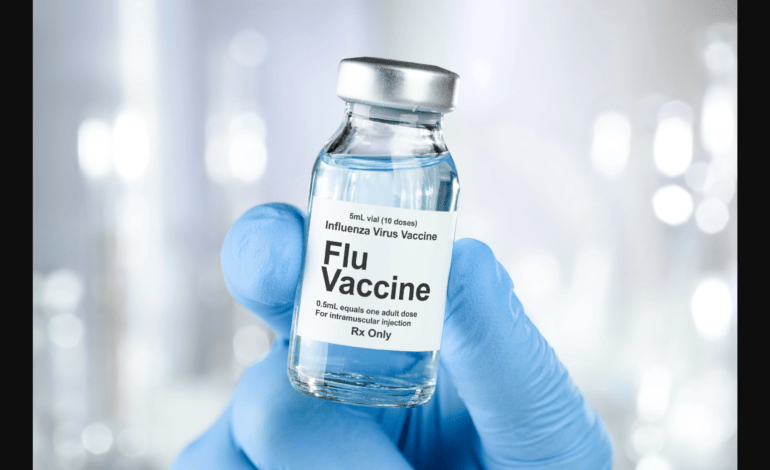
Flu season 2025–2026: What you need to know about risks, prevention, and new vaccine options
By: Dr. Avi Verma
As the 2025–2026 flu season begins, public health officials are predicting a moderate year—but experts caution that even a “moderate” season can take a heavy toll if people let their guard down.
According to the Centers for Disease Control and Prevention (CDC), influenza activity in the United States is expected to rise steadily through November. While last year’s flu wave was unusually severe, health experts say that does not mean this season will be mild.
“We may not see back-to-back severe flu seasons,” said Dr. Adrienne Keen of the CDC’s Center for Forecasting and Outbreak Analytics, “but that’s not a reason to ignore prevention.”
Why even a moderate season can be dangerous
During the 2023–2024 flu season—considered relatively average—there were an estimated 28,000 flu-related deaths in the U.S., according to Dr. Ryan Maves of Wake Forest University School of Medicine.
The following 2024–2025 season, however, was worse than expected, with over a million hospitalizations and as many as 130,000 deaths, including 280 pediatric deaths, one of the highest totals since national reporting began in 2004.
Doctors stress that anyone can get seriously ill from influenza, not just older adults or those with chronic conditions.
“Every year, emergency rooms see healthy young adults laid out by the flu,” said Dr. William Schaffner of Vanderbilt University Medical Center. “It’s a serious respiratory infection, not just a bad cold.”
Who is most at risk
- Adults 65 years and older
- Children under 2 years of age
- Pregnant women
- People with chronic conditions such as asthma, diabetes, or heart disease
Complications can include bronchitis, pneumonia, and even heart inflammation.
Flu or cold? How to tell
Both illnesses share symptoms like cough, sore throat, and fatigue—but the flu often comes on suddenly with fever, chills, and body aches. COVID-19 remains in circulation as well, and combined infections have been reported. Over-the-counter flu–COVID combo tests now available at pharmacies can help distinguish between them within minutes.
What’s new this flu season
1. At-home nasal vaccine
For those who dislike needles, FluMist Home, a nasal spray vaccine, is now available in 34 states, including Illinois. The vaccine can be ordered online, reviewed by a licensed professional, and administered by a caregiver or self-administered (for ages 18–49). It’s not recommended for people with severe immune conditions or children with asthma.
2. Expanded access to “super” flu shots
The Flublok vaccine, one of three high-dose flu shots, has been newly approved for individuals ages 9 and up (previously limited to 18+). It contains three times the antigens of a standard flu shot and may offer stronger protection, especially for older adults. Unlike some traditional vaccines, Flublok is egg-free, making it a good choice for people with egg allergies.
3. Thimerosal-free formulations
Most single-dose flu vaccines this year are thimerosal-free, reducing the risk of mild redness or swelling at the injection site. This aligns with CDC’s long-term goal to minimize mercury-based preservatives in vaccines.
4. Wider range of at-home tests
The Healgen Rapid Check COVID-19/Flu A&B Antigen Test—now fully approved by the FDA—allows quick detection of both viruses in 15 minutes.
The CDC advises repeating the test after 48 hours if results are negative and symptoms persist.
When to get vaccinated
The CDC recommends getting vaccinated in September or October, though later is still beneficial.
If you’re traveling during the holidays, get your shot at least two weeks before your trip for maximum effectiveness.
This year’s vaccines target A (H1N1), A (H3N2), and B/Victoria strains—the same viruses that dominated in the Southern Hemisphere, where vaccination reduced flu hospitalizations by nearly half.
“The vaccine works best at preventing severe illness,” said Dr. Schaffner. “Even if you get infected, you’re less likely to end up in the hospital.”
If you get sick
If symptoms develop, especially in high-risk individuals, antiviral medications such as oseltamivir (Tamiflu) can reduce the severity and duration of illness when started within the first 48 hours.
Your at-home flu season toolkit
- Annual flu shot (preferably thimerosal-free or high-dose for seniors)
- Thermometer and rapid flu/COVID test kits
- Fever reducers like acetaminophen or ibuprofen
- Cough drops and saline spray for congestion
- Hydration fluids or electrolyte drinks
- Face masks if household exposure occurs
Bottom line:
Flu prevention starts with vaccination, but it doesn’t end there. Good hand hygiene, staying home when sick, and quick testing for flu or COVID can all help reduce transmission this season.
Disclaimer:
This article is based on publicly available information from the CDC, FDA, and statements by medical experts. It has been rewritten and summarized by the IndoUS Tribune Health Desk for educational purposes. The IndoUS Tribune does not claim original reporting of these medical forecasts or expert quotes. The information provided here is not a substitute for professional medical advice. Readers should consult a qualified healthcare provider for diagnosis or treatment of influenza or other medical conditions.